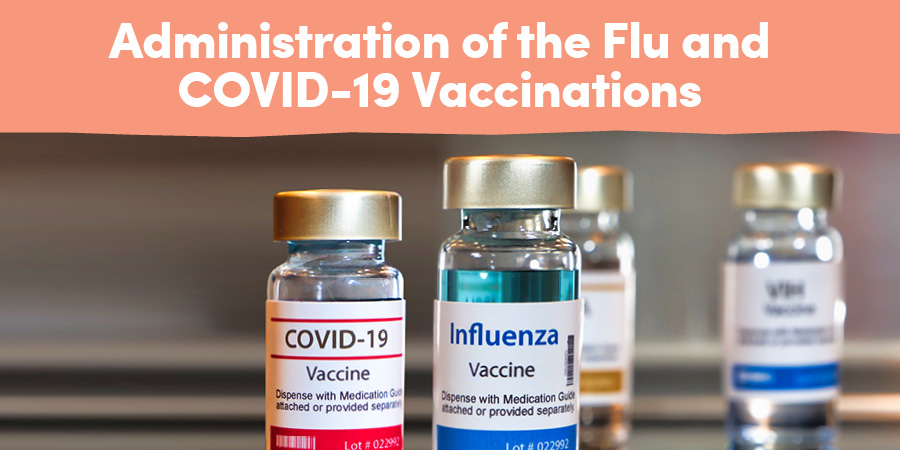

 According to the Centers for Disease Control and Prevention (CDC)
According to the Centers for Disease Control and Prevention (CDC)  and the National Center for Immunization and Respiratory Diseases (NCIRD)
and the National Center for Immunization and Respiratory Diseases (NCIRD)  , in the United States, flu season occurs in the fall and winter. While influenza viruses spread year-round, most of the time, flu activity peaks between December and February, but activity can last as late as May.
, in the United States, flu season occurs in the fall and winter. While influenza viruses spread year-round, most of the time, flu activity peaks between December and February, but activity can last as late as May.
When providing members with the flu vaccine, you should ensure they do not have a suspected or confirmed case of COVID-19. Flu vaccination should be deferred for people with suspected or confirmed COVID-19  , even if they don’t have symptoms, until they meet criteria for leaving quarantine
, even if they don’t have symptoms, until they meet criteria for leaving quarantine  (based on CDC guidance
(based on CDC guidance  ). While mild illness is not a contraindication to flu vaccination, vaccination visits for these members should be postponed in order to avoid exposing healthcare personnel and other patients to the virus that causes COVID-19. When scheduling or confirming appointments for flu vaccination, members should be instructed to notify your office or clinic in advance if they currently have or if they develop any symptoms of COVID-19.
). While mild illness is not a contraindication to flu vaccination, vaccination visits for these members should be postponed in order to avoid exposing healthcare personnel and other patients to the virus that causes COVID-19. When scheduling or confirming appointments for flu vaccination, members should be instructed to notify your office or clinic in advance if they currently have or if they develop any symptoms of COVID-19.
If the member has a confirmed case of COVID-19, flu vaccination should be deferred until the member is no longer acutely ill from COVID-19  . This may be different for members who are already being cared for in a medical setting than it is for members who are quarantining at home. In a medical setting, the timing for vaccination is a matter of clinical discretion.
. This may be different for members who are already being cared for in a medical setting than it is for members who are quarantining at home. In a medical setting, the timing for vaccination is a matter of clinical discretion.
If a member is eligible, both the influenza and COVID-19 vaccines can be administered at the same visit, without regard to timing, as recommended by CDC and its Advisory Committee on Immunization Practices (ACIP)  . Best practices for administering more than one vaccine
. Best practices for administering more than one vaccine  , including COVID-19 vaccines and influenza vaccines, include:
, including COVID-19 vaccines and influenza vaccines, include:
Always injecting vaccines into different injection sites with sites at least 1 inch apart, if possible, so that any local reactions can be differentiated.
If administered at the same time, COVID-19 vaccines and vaccines that might be more likely to cause a local injection site reaction (for example, high-dose and adjuvanted inactivated influenza vaccines  ) should be administered in different limbs, if possible.
) should be administered in different limbs, if possible.
Injecting the vaccines rapidly without aspiration since aspiration is not recommended before administering a vaccine.
The CDC has developed clinical algorithms  that can help guide decisions for influenza testing and treatment when SARS-CoV-2 and influenza viruses are co-circulating.
that can help guide decisions for influenza testing and treatment when SARS-CoV-2 and influenza viruses are co-circulating.

